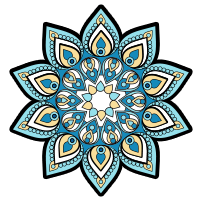What is Reflexology? Reflexology is based on the premise that all of the body’s major organs are connected by nerve endings to various points on the body. There are over 7000 nerve endings on each foot alone, making them an ideal place to work with the body to promote a deep state of relaxation and bring it back into harmonious balance. By applying pressure on reflex points, impulses are transmitted stimulating the various body parts and in turn assisting the body in its own ability to heal.

Foot Reflexology treatments can either be general, working on all main reflex points to promote overall health and wellbeing or target specific points for particular health issues. The reflex points for Foot Reflexology are shown on this Foot Reflexology Chart displayed by the Association of Reflexologists on their website.
Reflexology has a cumulative effect therefore a course of treatments is recommended, however it can be booked as a one off relaxing treatment and combined with foot massage. The treatment plan you would like to follow will be identified during the initial consultation at your first appointment.
History and theory of Reflexology: (East meets West)
This healing art takes root in many ancient civilisations but was pioneered in the west by Eunice Ingram (1889-1974) who based her work on Dr Wiliam Fitzgerald’s, ‘Zone Theory.’
Zone Theory divides the body into 10 longitudinal zones and advocates that when pressure is applied to specific points in any of the ten zones a signal is created and transmitted throughout the nervous system to the brain, which in turn stimulates the internal organs to regulate and improve the way they function. The theory denotes that any organ affected within a zone can impact on other organs in the same zone by virtue of the circulation or energy flow being affected.
Eunice Ingam devoted her life to developing Fitzgerald’s theory in specific regard to the feet by mapping out in detail the points on the feet and documenting the anecdotal evidence she built up over the years in her book, ‘Stories the Feet can Tell’.
Traditional Chinese Medicine is based on a similar premise, mapping out not only the body’s organs but also the organs’ energy meridians. The principle uniting Chinese reflexology with reflexology as it is practised in the west, is that in order for the body to be in optimum health the energy in the body must be free flowing. Massaging or pressing specific points can balance the energy zones, clear blockages and stimulate the flow of energy, blood, nutrients and nerve impulses to the corresponding area.
